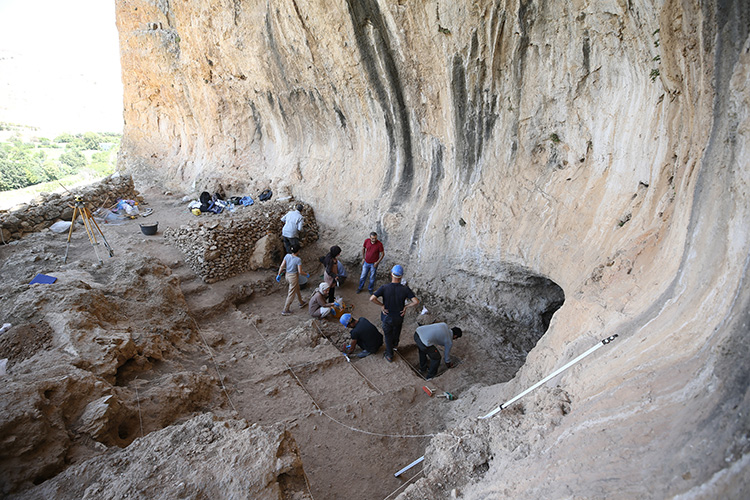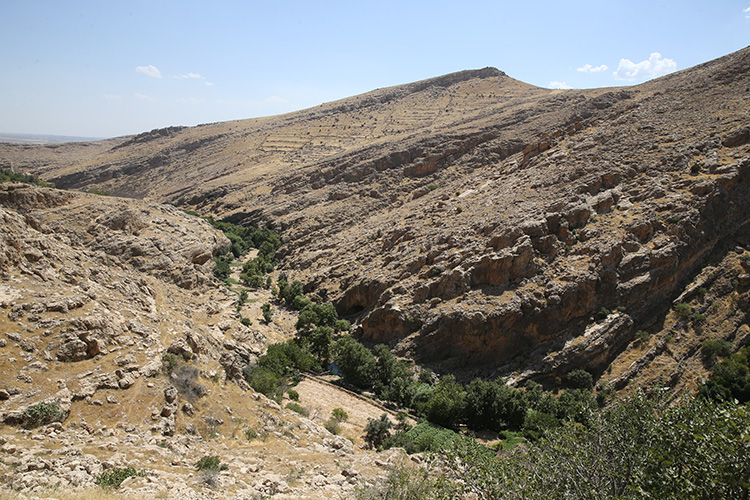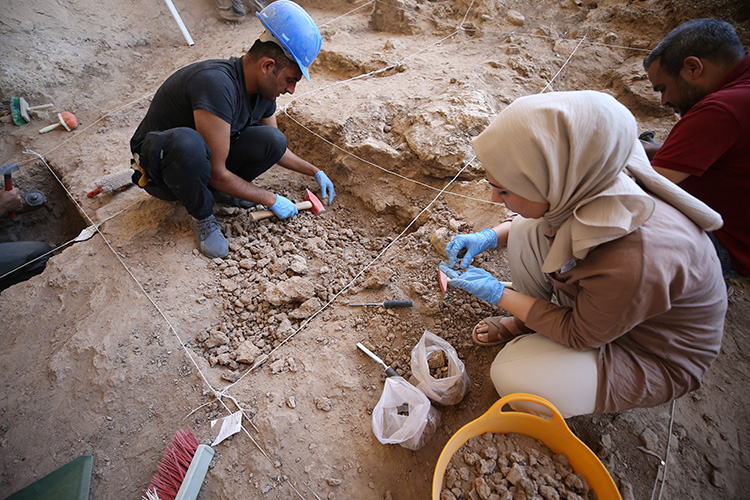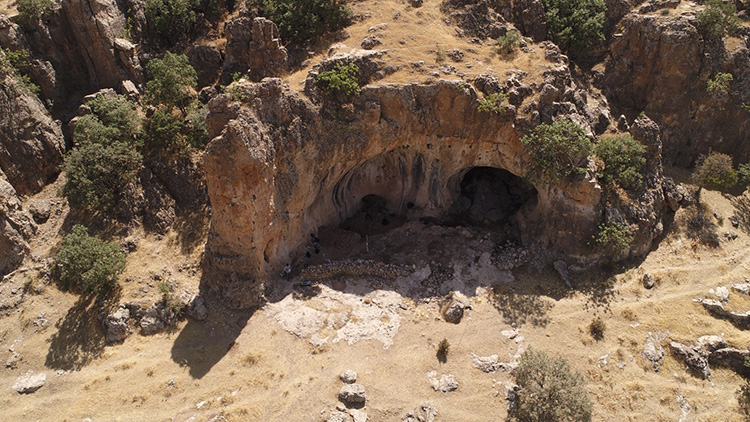
Archaeologists are tracing the footsteps of a 200,000-year-old history in a Gurs Valley’s cave
In a cave located 20 km west of the southeastern Turkish province of Mardin, in the Gurs Valley, traces of a 200,000-year-old history of humanity are being sought.
Gurs Valley is home to historical castles, mansions, mausoleums, mosques, caravanserais, and church ruins from the Late Roman, Early Byzantine, Seljuk, and Ottoman periods, as well as stone houses.
A rescue excavation has been launched under the leadership of the Mardin Museum Directorate in the historical cave.

Under the leadership of Museum Director Gani Tarkan, with the scientific consultation of Associate Professor Dr. Ergül Kodaş from the Department of Archaeology at MAU Faculty of Literature, and with the support of the Kızıltepe District Governorship, an archaeological excavation is being conducted. During this excavation, numerous cutting and piercing tools, as well as flakes made from flint, dating back to the Paleolithic Age (Old Stone Age), have been discovered.
📣 Our WhatsApp channel is now LIVE! Stay up-to-date with the latest news and updates, just click here to follow us on WhatsApp and never miss a thing!!
The first cave excavation of the Paleolithic period in Northern Mesopotamia
The excavation leader and Director of the Mardin Museum, Gani Tarkan, informed an AA reporter that the cave settlement located in the Gurs Valley belongs to the Paleolithic period. He mentioned that they initiated excavation work in the cave with academics from Artuklu University and volunteer students.
In the ongoing excavations at Uluköy Cave, we have reached all three phases of the Paleolithic period: ‘Lower Paleolithic,’ ‘Middle Paleolithic,’ and ‘Upper Paleolithic.’ Discoveries belonging to these periods have been unearthed. In this regard, the Uluköy Cave excavation holds great significance for us. Tools and artifacts made from flint, such as cutting and piercing tools, as well as flakes, which were used by humans during the Paleolithic era, are being uncovered. Additionally, we are accessing tools used in hunting during that time. We might even come across bone artifacts belonging to animals and perhaps humans who lived during that period. Finding a human skeleton would be extremely exciting for us,” said Tarkan, mentioning that after examining the findings, a precise dating will be carried out.

Tarkan stated that there is likely evidence of a settled life in the cave, and with the findings they are uncovering, they will reach accurate conclusions.
Emphasizing the meticulous nature of the work, Tarkan shared, “There are not many examples like the Uluköy excavation in the world; it’s one of the few in Turkey. In fact, we can even say it’s the first cave excavation of the Paleolithic period in Northern Mesopotamia.”
Associate Professor Dr. Kodaş mentioned that last year, they identified the cave through surface surveys, and this year, they began the rescue excavation.

Highlighting the important data for prehistoric archaeology in the region, Kodaş explained that the excavation is ongoing in the cave. They are initially focusing on areas that have suffered damage.
Kodaş noted that they believe the traces of the “Middle Paleolithic” period are predominant in the cave. She stated:
“We aim for this region to play an important role in identifying and introducing these periods to the scientific world. We have already determined that even older periods than the Neolithic era (the Polished Stone Age) existed in this area; we’re talking about a history that goes back 200,000 years. During our surface surveys across 4 districts in the city, we found numerous artifacts from this period, but having them within the cave and being able to date them holds a separate significance.”
You may also like
- A 1700-year-old statue of Pan unearthed during the excavations at Polyeuktos in İstanbul
- The granary was found in the ancient city of Sebaste, founded by the first Roman emperor Augustus
- Donalar Kale Kapı Rock Tomb or Donalar Rock Tomb
- Theater emerges as works continue in ancient city of Perinthos
- Urartian King Argishti’s bronze shield revealed the name of an unknown country
- The religious center of Lycia, the ancient city of Letoon
- Who were the Luwians?
- A new study brings a fresh perspective on the Anatolian origin of the Indo-European languages
- Perhaps the oldest thermal treatment center in the world, which has been in continuous use for 2000 years -Basilica Therma Roman Bath or King’s Daughter-
- The largest synagogue of the ancient world, located in the ancient city of Sardis, is being restored











Leave a Reply